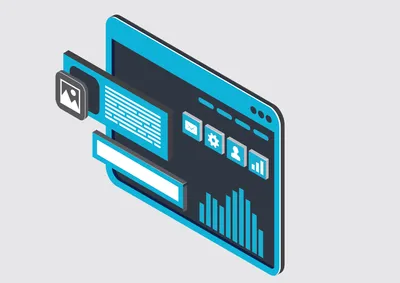Shopify SEO Guide
Guide to SEO on Shopify
Getting Shopify SEO Right in 2025
There's a reason why Shopify has risen to the top to become one of the most popular e-commerce platform in the world.
It’s super easy to use, providing numerous design features and functions geared towards a streamlined shopping experience for merchants and customers. Even those lacking a technical background can build a great looking store and start selling products - in a matter of hours.
Thousands of new Shopify stores are being created everyday, choosing the platform for its many benefits and low barrier to entry.
Creating a store is the first step, but unlike Kevin Costner said “If we build it, they will come”…they won’t just come.
Time and attention needs to be given to making sure your website is well optimised (Search Engine Optimisation) so you start seeing your sales stats grow.
While this guide is by no means a silver bullet, it covers off many of the basic issues we see overlooked by many Shopify Merchants everyday.
Some are simple, some are complex, but all are within your ability to stay on top of.
Before you start thinking about Shopify SEO
Start at the very beginning
There are three types of merchant out there who might be reading this guide:
- Current Shopify merchants looking to step up their game
- Current merchants on other platforms looking at moving to Shopify and wanting to understand what they are getting themselves in for
- Brand new Shopify Merchants who need to know where to get started
Which ever one of these fits you all the steps are the same (You just might have done these steps already, or be just about to get started with these decisions):
Setting up your domain name the right way
From scratch or resolving a past issue
This might seem really obvious, but there are a few steps here that actually need to be taken into consideration: If you are a brand new website, you’ll need to decide on a domain name.
Shopify set you up with a subdomain (Something like yourshop.myshopify.com) but this is not something you want to run with as your public URL, both from an SEO point of view and a branding professionalism point of view.
Pick something brand able and relevant and don’t overthink SEO here (It’s not 1996, don’t worry about keywords being in the domain name…)
For existing stores, you will already have you own domain name which will be working perfectly, but, how is your DNS setup? Choosing a fast and reliable DNS provider is a really important (But often overlooked) part of SEO and can have a huge impact on page load speed and overall on the user experience.
If this sounds confusing, the setup should be:
Choosing an SEO Friendly Theme
It’s certainly true that not all themes are created equal.
While no theme is out of the box perfect for SEO (As much as some will claim they are ‘SEO optimised’), there are several that will save you time and effort by being built better for the outset.
Overall, the things to look for when choosing a theme (Either to get customised by your developer, or to use out of the box) are:
- Responsiveness: A theme that perfectly adapts to every device is an absolute no brainer in todays development landscape.
- Good UX straight out of the box: Things like navigation, and default content structure, should come already setup to save you time and money (Make sure you check out a live preview of the theme you are choosing to customise)
- Limited reliance on external sources: There are many great features you can achieve with Shopify Apps and calls to third party resources but ideally you want to keep this to only the necessary to improve the website load time.
Basically the best advice around choosing a theme is to not go too crazy with design or custom elements. Stick to a more familiar ecommerce look and setup.
The benefits of this are several:
- Reduced costs and faster to get to market
- Less additional custom code and media (Images/videos etc)
- Less future and current compatibility issues
Last tip is always have a chat to your developer about what will work best for you - the internet can be full of bad advice that can lead you up the wrong path (Not this guide though obviously…)
Using SSL
Secure what?
You've likely noticed most website URLs these days begin with https:// instead of the old http:// (Without the trailing ’s’).
The difference the 's' makes is a matter of user security, but also a current SEO Ranking factor that Google has directly mentioned several times in the past few years (which is a rare thing)
Google gives preference to websites using SSL as they can be confident these sites are more secure and legitimate.
Making sure your Shopify store is secure tells your customers and search engines that you can be trusted, and is an easy step you can take to improve your SEO.
Shopify makes this process simple by including them with your monthly plan.
This can be activated from your Shopify dashboard by clicking Sales Channels > Online Store > Domains.
Some more specifics on the two possible scenarios you may be facing:
SSL for New Stores on New Domains
When you choose to build your store through Shopify on a new domain (as opposed to migrating a store you've already created on the Shopify platform), the steps we mentioned above are enough to activate your SSL certificate.
Migrating from a Non-secure Site
If you're choosing to move your store that already exists on a non-secure domain or platform to Shopify, or if you wish to take your non-secure Shopify store and apply SSL to it, you need to be aware of a few things.
Moving from non-secure to secure (http:// > https://) is effectively moving the site to a new domain name and can become an issue if not handled with care (It’s easy though!)
Thankfully, Shopify has thought about this already and by making the change in your dashboard, they will automatically sort out all the necessary redirect issues.
If you are after some further reading material on transitioning to SSL, here are some great resources:
Register and Setup Google Analytics
Power in the data
While Shopify does provide some basic statistical information and reporting, the data and its usefulness is fairly minimal.
Using a powerful statistics solution like Google Analytics will provide you with the data that you need to be able to make smart, data informed decisions about your business.
More specifically, you will be able to know much more in depth details about how your Shopify store is performing:
- Finding out your most valuable traffic sources
- Finding out high performing products and content
- Finding under performing products and content
- Analysing the value of your various marketing activities
Now you are sold on this, how do we set it all up?
- Sign up at google.com/analytics
- Grab the verification code
- Input the code into xxx field in your Shopify CMS
- Go back to Google Analytics and confirm the validation
- Wait for the traffic to start pouring in.
As well as advanced reporting, Google Analytics integrates really well with your Google Ads accounts; help you track email campaign results; and can even help create audiences to run Remarketing campaigns to.
Setup Google Search Console
Google starts tracking data as soon as it's added to GSC
If you have a website and haven’t setup Google Search Console - you are crazy. Sorry to be blunt, but Google is providing website owners with such valuable information - it’s an absolute must.
It goes without saying that Google will find your website on its own, setting up Google Search Console and validating your website is easy to do, and makes it much easier for Google to get exactly what they need faster.
In addition, Google Search Console provides some amazingly powerful information about your website that won’t be found in Google Analytics, or anywhere else for that matter.
Although this information can change relatively quickly, some resources on how to get the most out of Google Search Console we love:
To set this up:
- Sign up at google.com/searchconsole
- Grab the verification code
- Input the code into xxx field in your Shopify CMS
- Go back to Google Search Console and confirm the validation
- Wait for Google to gather your data.
Check Your Shopify Store's Page Load Speeds
The faster, The better
Page load speed is significant Google ranking factor.
It is in Google’s best interest to encourage a good user experience to its users, and it achieves this by sending people to great websites.
Generally, there are two top level factors that make a great website:
- Great content (Obviously)
- Fast loading
Out of the box, Shopify websites are built fast.
They handle all the Software, CDN’s, image serving and everything else, so why is page load still an issue on Shopify sites?
Because we ruin them!
Shopify sites become slow as we start adding more features, more images, adding email popups, and embedding background videos.
It’s important no matter what stage your Shopify site is at that you constantly paying attention to how fast your website loads, and how the updates you make might effect that.
One thing that is important to remember is not get too caught up on the ‘time’ or ‘score’ they might give you as they are all very subjective. Just worry about the fixing the issues.
If you do want to use a tool to give you an idea where to start:
- Pingdom
- Google Lighthouse
- Gmetrix
In a more general sense, improving page load speed to consist of a few main things:
- Compress your images to reduce their loading time (and in turn reduce the loading time of the entire page).
A program such as Tiny Png or ImageOptim can be used to compress your images and reduce their file size.
In addition, ensure the size of the image is only as big as it needs to be. A 2000px x 2000px raw image that is resized back down to 100px x 100px is a big waste of resources. Open these images in Photoshop or similar and resize them to only the required size.
- Limit your use of external scripts and custom code. Essentially, any scripts from sources other than Shopify may create complications with its native code. This is especially true if you're using code from a third-party source as it may include unnecessary parts that slow load time.
- Use web safe fonts as they are designed to load faster (and minimise the number of fonts you use overall)
- Use a solid DNS provider such as CloudFlare. Domain provided DNS is always below par and using and true DNS provider will stop page load issues at a root domain level.
There are lots of other things that may cause page speed issues on your website that are more on a case by case basis but if you take care of the above - you’ll be ahead of the pack.
Make Page Titles STRONG
Titles help search engines know what your page is about
You've heard the phrase “don't judge a book by its title,” but odds are you still do it anyway, right? Well, search engines are the same way: they will look at multiple elements of a web page when trying to determine how it should be ranked.
One of the most significant factors by far is the page title. It's the part of a search result that stands out the most, and is likely to get more attention than the accompanying description and content on the page (Note: Titles are a ranking factors while descriptions are NOT)
Always start a title with what you want to rank for, be it a phrase or single word, and don't risk losing ground by being vague. Specific is always better.
The second key is to ensure it makes sense! Remember these things:
- Google is VERY smart so readability is vital
- Your users see this Title in the SERP’s so make sure it is enticing for them to click on.
Let's say, for example, that you're running a business called “Barney’s Dog wash.” The business is located in Richmond (Victoria 3121) and is focused on washing Dogs. How would you order the elements of the title?
The most important elements are ‘Dog Wash” and “Richmond”, which should be front and centre of a title. While ‘Barney’s Dog Wash’ is the name of the business, it’s important we are descriptive before we get into branding.
In this case, we would go with ‘Dog Wash in Richmond - Barney’s Dog wash’’ which will look great in the search results, and also provide a good CTR from customers.
If you are unsure, do some Google searches to see what your competitors are doing and take inspiration from those.
There are two processes for editing page titles in Shopify, one for your home page, and one for each other page.
Editing Your Shopify Home Page Title
Editing your home page title requires you to go to your dashboard. From there you need to click Sales Channels > Online Store > Preferences. You'll see a box that will allow you to edit the title however you like.
Editing Your Internal Page Titles in Shopify
The method you use to edit a page title for your other Shopify pages remains essentially the same, no matter if the page is static, or a product page.
In the Shopify dashboard, locate the page, product, or post you want to edit the title for. After you've found it, scroll down to the bottom of the page and click the link reading ‘Edit website SEO.' This will allow you to edit both the page title and the URL (more on the value of editing the URL later).
Engage With Meta Descriptions
Concise, easily read meta descriptions draw users to your site
Meta descriptions are the brief snippets of web pages you see beneath page titles in search results.
Google has told us for a few years now their algorithms don't use meta descriptions when determining the ranking of a page, but they can still have a huge impact on the people searching. When a meta description is written well, it will entice the reader to go to your store and hopefully buy something. This is referred to as the “Click Through Rate” or “CTR”, and the general consensus among experts in the SEO field is that this **can** actually have an impact on a page's ranking.
Whatever the case, your meta descriptions are incredibly important. To ensure your meta descriptions are effective and encourage high CTR, use these really simple guidelines:
- Keep it concise
- Always be accurate
- Include the keyword or keywords you want to rank for
- Have a call to action
Like page titles, Shopify includes two different processes for editing a meta description depending on if it's your home page or one of the other page types.
To edit your home page's meta description, just click Sales Channels > Online Store > Preferences and the box that appears on the right of the screen will allow you to change it as you wish.
With other types of pages, simply just need to locate the page you wish to edit and click the ‘Edit website SEO’ link.
Use Headings the right way
There's more to it than just aesthetics
If you aren't a web designer or have knowledge of typography, it's understandable that you wouldn't understand the impact bad formatting can have on readers.
HTML code that creates headings (such as H1, H2, and H3) are the more aesthetically pleasing way to break up blocks of text.
The alternative to the above correct method is to utilise heading tags to purely style text, but not consider the SEO implications.
This approach creates a few problems. (And is one we see often)
Besides just being aesthetically unappealing, constant shifts into bold/italics/capitals van make it harder for readers to focus and make reading itself more difficult for those with vision impairments.
Knowing how to use headings properly before you launch new content can save you time and confusion. Shopify makes using and adjusting headings very simple.
All you have to do is highlight the desired text and choose the heading type the drop-down menu that appears.
The easiest way to get this right is to just think of it like you are creating a text document. Use headings and sub headings to accurately signify each individual section that is important on the page.
Bonus tip: Heading tags work on a hierarchy so its not important you have a h1, then a h2, and then a h3 on the page.
There should always only ever be 1 <h1> tag, but you can have multiple <h2>’s or <h3> tags.
Make Use of Alt Text and Optimise File Names
A picture is worth a thousand words (or at least what you choose to call it..)
When Google is doing its work, their algorithms don't just skim the surface and consider your text. They look at everything on the site, images included. Specifically on images, they look at data known as the alt text and file names. If you've never given them much thought before, it's time to dig a little deeper and take a look.
Alt text is important to images for a few reasons: First, screen reader programs use alt text to provide a description of the associated image to assist any visually impaired users who visit your website. Second, search engines will use alt text as part of the page categorising process and to better understand your content (Along with the filenames and the text that surrounds the image)
Alt text for an image will also appear in place of that image if it fails to load for any reason.
You can appease both screen readers and search engines by using alt text and filenames that accurately describe your images while also containing your relevant focus keywords (Only if appropriate).
The best way to think about this is to edit them so they are useful first (Don’t overthink the SEO part)
Adding Alt Text to Shopify Pages or Posts
For images on pages or posts, all you have to do is locate the picture you wish to add alt text to and double click it.
A box will appear allowing you to edit the alt text and other aspects of the image.
Adding Alt Text to Shopify Products
Editing product images is slightly different but equally straight forward.
Locate the relevant picture as you did above, hover the cursor over it, and then left-click the word ‘ALT.’ Clicking the ALT icon will make a box appear that will allow you to create and edit alt text.
Changing Image File Names in Shopify
Changing file names is a bit of a pain in Shopify, so you'll save time if you edit file names before you upload them. If you are not as organised as that (Let’s face it, who is!), similar to titles, meta descriptions, and alt text make sure the content of the image is included in the title, as well as keeping them concise.
So let's say you're selling reusable straws on your Shopify store, and one variety of stainless steel. Default filenames, particularly those from photographs, are an incomprehensible mess of letters and numbers. The best name you could use is a simple description, such as ‘stainless-steel-straw.jpg' or something similar.
If, however, you've already uploaded an image to Shopify and wish to change its filename, you'll need to delete the existing image on the platform and replace it with a new version with the new filename. If you've been selling for a while and have a large number of items for sale, this can be a monumental task. It’s worth weighing up if the time invested will be worth the effort. If you feel that it's just too much, you can focus on updating your key items instead. Look at your highest sellers or the items that best represent what your store is about, and replace those images instead.
Bonus Tip: ALT text and filenames are just one of the hundreds of SEO factors Google will consider. A quick cost/benefit analysis will let you know if this is worth it for your store although it can have some small impact on your Google Image search traffic if thats of interest.
Tidy up your URL’s
A simple structure is one that is easily understood
Using tidy URLs just means simplifying the structure so that search engines and visitors can make easy sense of them. The same principles from image filenames apply here.
For example, a store that sells green drink bottles would be better to use a descriptive URL with a short structure, such as yourwebsite.com/green-drink-bottles
Shopify doesn't generate random URLs by any stretch, but the way they do generate URLs is less than clean than it could be because it adds prefixes to categorise pages:
- /pages/ before pages
- /posts/ before posts
- /products/ before products
- /collections/ before collections of products
The prefix won't harm your SEO in the bigger scheme of things, but it's still not something you leave alone.
We’ll focus our attention on the parts we have control over, which is everything that follows the prefix. Put your efforts into keeping these descriptive, well optimised and if possible/relevant to your target keywords.
When you want to edit a page's URL in Shopify, go to the page, product, or post you want to edit, scroll down and click 'Edit Website SEO.' Then, look for the 'URL and handle' box and change it to whatever you like.
Also note that if you choose to change a Shopify URL that you select the 'create URL redirect' option. (This takes care of the important 301 redirect issue)
Changing the URLs of pages that are underperforming in search results is a sound strategy to boost performance. However, always think twice before you make changes to the URL of a page that is doing well: high-ranking pages are much more likely to have many other pages linking to it, and they can lose some of this value if you the URL changes, and will become entirely useless if you don't remember to use the 301 redirect that page .
As a general rule of thumb, if you don't have a clean URL when you create the page, it's best to change it as soon as possible, before the page starts to get too much traction.
Bonus Tip: I’ll say it again - DO NOT forget 301 redirects.
Add Rich Snippets to Your Content
Rich snippets offer a meaningful summary at a glance
Rich snippets are little pieces of data that you can add to your own content that users and search engines can pick up on to better determine what your page is about. They're incredibly important to how your page interacts with search engines. Rich snippets can feature visual images related to the content of a page or post, author names, user-ratings, prices, and other images that can offer a meaningful summary at a glance.
Adding rich snippets requires some knowledge of HTML code. They can be generated through what's called Schema Markup with tags provided by Schema.org. If you need reassurance that Schema is legitimate, know that it's a collaborative project between Google, Yahoo!, Yandex, with the sole purpose of helping website owners provide more accurate information for search.
Rich snippets can be included in a Shopify store in two ways.
- The first is to include data markup code to your Shopify templates. You can find help for this in Shopify's help resources.
- The second method is to put your faith in a rich snippets app. You can find many of these in Shopify's app store.
- As an owner of a Shopify store, there are some amazing rich snippets you really should be taking advantage of (You can be sure your competitors already are)
- Reviews
- Star ratings
- Price
The value of rich snippets in relation to SEO is something we don’t completely know the value of, but like meta descriptions, it certainly helps to help users' attention and increase the CTR for that page.
Create Great Content
Users appreciate useful content
When some users jump into their first Shopify store, they focus so hard on getting their product data perfect and seem to forget about everything else. Choosing the perfect photos, writing a great product title, crafting a compelling description, are all hugely important. But what about other content? The kind of content that gives your visitors answers to their burning questions.
Useful and well written content will always perform well on Google.
Great content is the kind of stuff that is more likely to be shared on Social Channels (other than your own), and also much more likely to get linked to as opposed to one of your more popular ‘collections’ pages
If you need some further reading around content creation:
- Creating quality content (Kissmetrics)
- Link building strategies (Moz)
Continually monitor results and test, test, test
Never stop tracking
SEO on your Shopify site is not something you can do once and then watch the sales roll in. You need to be continually working at it to ensure your organic traffic continues to grow.
The easiest way to do this is by monitoring your performance month on month in terms of sales growth, traffic & visibility increase, and improvements in rankings.
Some great tools for doing this are:
- Monitoring changes in rankings using tools such as SEMrush.
- Keeping a close eye on Google Analytics and Google Search Console for changes or trends
- Monitoring new and existing websites linking to you with tools such as Ahrefs
Bonus Points: Get Involved in the Shopify Community
Learn and grow your Shopify skills in a community
A slightly left field recommendation is to get involved with people who are doing the same thing you do.
Learning from each other is the greatest way to get better quicker, and will help you to feel less alone in this eCommerce journey.
Some ways you can do this include:
- Go to Shopify Events
- Get to know the team at Shopify in your local city (They are everywhere!)
- Talk to other merchants and make friends with competitors
- Join online Facebook and Slack communities
While this might not directly help your SEO, these types of activities can help you propel your business further and learn more about what is working for others in a similar position.
Now what?
Time to get started!
Now you have all this information - what now? Get to work buddy! Shopify SEO is the long game and nobody said it would be easy.
This is a constant battle, and the goal posts are constantly changing, but the rewards are enormous.
Get this all right though and it can actually be a lot of fun and very rewarding.







